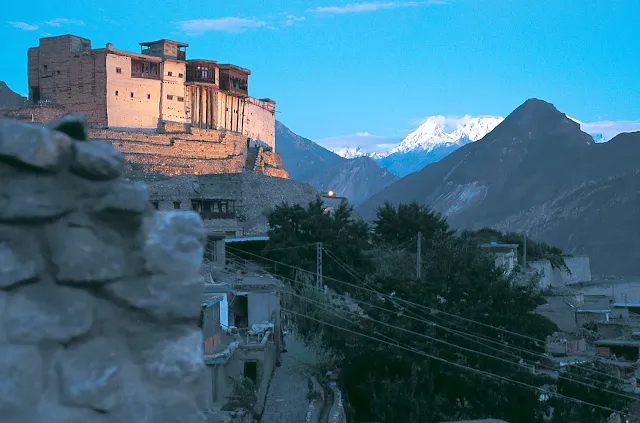Baltit Fort Hunza: A Magnificent Example of Traditional Architecture and Design

The Baltit Fort is a magnificent example of traditional architecture and design. The fort is constructed from locally sourced materials, such as stone and wood, and is designed in a unique style that reflects the local culture and traditions. The fort is situated on a high rock, which offers stunning views of the surrounding mountains and valleys.
The Baltit Fort is divided into two main sections, the lower and upper portions. The lower section is known as the Shah Khan Gali, while the upper section is known as the Tum Khan Gali. The lower section of the fort was originally used for defensive purposes and is constructed with thick walls and narrow passages, while the upper section is more ornate and was used for residential purposes.
The upper section of the fort is where the Mir of Hunza and his family resided. The section includes a number of rooms and living spaces, as well as a courtyard, mosque, and other important structures. The courtyard is a particularly impressive feature of the fort, with intricate designs and patterns that are representative of the local culture.
One of the most notable features of the Baltit Fort is the tower, which stands at the highest point of the fort. The tower is known as the Hunza Tower and is a symbol of the strength and power of the Mirs of Hunza. The tower is accessed through a narrow passage that leads to a spiral staircase, which provides access to the top of the tower.
The Baltit Fort is also home to a museum, which houses a number of exhibits that showcase the local culture and history of the region. The museum includes a number of artifacts and objects that were used by the Mirs of Hunza, as well as other items that are representative of the local culture and traditions.
The Baltit Fort has undergone a number of renovations and restorations over the years. The fort was abandoned for a number of years, but was later restored by the Aga Khan Trust for Culture in the 1990s. The restoration work was carried out using traditional methods and materials, and was designed to preserve the historic character and integrity of the fort.
Today, the Baltit Fort is one of the most popular tourist destinations in the Hunza Valley. Visitors come from all over the world to see the fort and to learn more about the local culture and traditions. The fort is open to the public and guided tours are available for those who want to learn more about the history and significance of this important cultural landmark.
Baltit Fort is a historic and cultural treasure that is an important part of the heritage of the Hunza Valley. The fort is a magnificent example of traditional architecture and design, and offers visitors a unique opportunity to experience the local culture and traditions of this fascinating region. If you are planning a trip to Pakistan, a visit to the Baltit Fort is an absolute must.
Frequently Asked Questions about Baltit Fort Hunza (FAQs):
What is Baltit Fort Hunza, Pakistan?
Baltit Fort is a historic fortress located in the Hunza Valley in Pakistan. It was originally built in the 8th century but was later rebuilt in the 16th century by the Mirs of Hunza who ruled the region.
What are the main features of the fort?
The fort is divided into two main sections, the lower and upper portions. The lower section of the fort was originally used for defensive purposes, while the upper section was used for residential purposes. The fort has a courtyard, mosque, and other important structures. It also features the impressive Hunza Tower and a museum that houses a number of exhibits showcasing the local culture and history.
Who originally built the fort?
The original builders of the fort are not known, but it is believed to have been built in the 8th century. The fort was later rebuilt in the 16th century by the Mirs of Hunza.
Is the fort open to the public?
Yes, the fort is open to the public and guided tours are available for those who want to learn more about the history and significance of this important cultural landmark.
What is the best time to visit Baltit Fort?
The best time to visit Baltit Fort is between May and October when the weather is pleasant and the skies are clear. However, the fort is open year-round and can be visited at any time of the year.




